#aeolid nudibranch
Photo
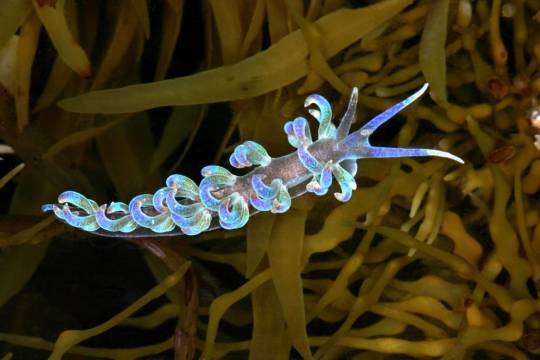
Sea slug (Phyllodesmium macphersonae).
#sea slug#sea slugs#phyllodesmium#phyllodesmium macphersonae#nudibranch#nudibranchs#gastropod mollusc#gastropod molluscs#aeolid#aeolidida#aeolid nudibranch#aeolid nudibranchs#water#underwater#ocean#marine#sea#aquatic#animal#animals#museumsvictoria#nature
10K notes
·
View notes
Text

Nudibranch
#Flabellina affinis#nudibranch#wikipedia pictures#wikipedia#nature#animals#aeolid nudibranch#molluscs#mollusk#mollusca#gastropoda#gastropods#marine gastropods#marine critters#marine life#marine animals#marine creatures#ocean critters#ocean life#ocean creatures#ocean animals#marine biology#sea life#sea critters#sea animals#sea creatures#sea slug#sea slugs#oceancore#ocean aesthetic
145 notes
·
View notes
Photo

Flabellina affinis
57 notes
·
View notes
Text
Listen to me, boy. You will hear about sea slugs. You will enjoy sea slugs
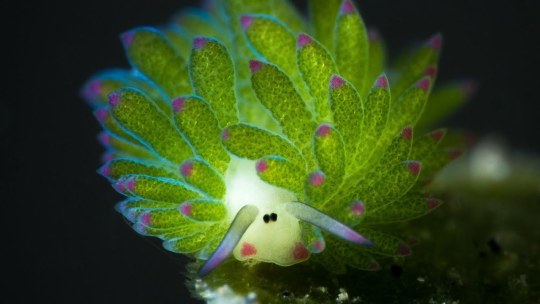
Costasiella kuroshimae / leaf sheep. Discovered off the coast of Japanese island Kuroshima in 1993, they can indirectly perform photosynthesis by absorbing chloroplasts from algae

Cyerce nigricans. The cerata can be easily cast when disturbed. They can also swim by powerfully flapping said cerata when strongly stimulated. I think they look like butterfly wings!

Jorunna parva / sea bunny. They are covered in papillae, which are fleshy protuberances used for sensory functions. It looks like fur!
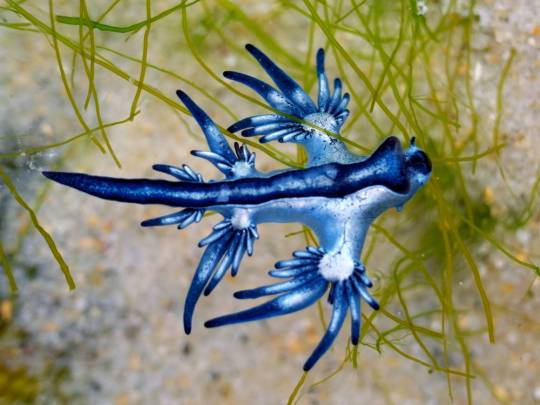
Glaucus atlanticus / blue glaucus. They are rarely seen, except during periods of on-shore winds which brings them and their prey into coastal waters. They are the most dangerous sea slug to handle, able to give humans a very painful and potentially dangerous sting
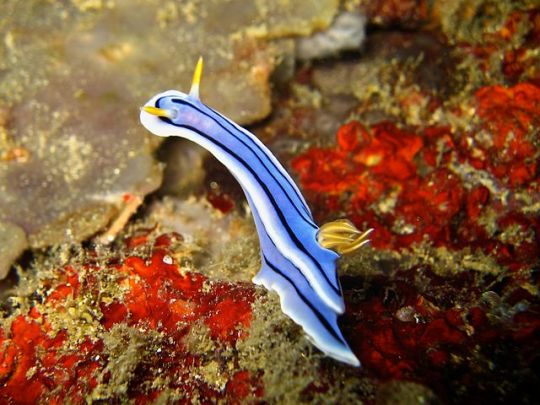
Chromodoris lochi / loch's chromodoris. They are spongivores, and prefer being on the underside of overhangs on rocky reefs. Their distribution is widespread in the Indo-Pacific. Everyone I show sea slugs to seems to love this little guy
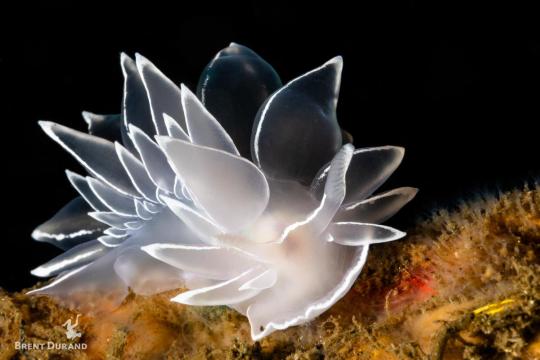
Dirona albolineata / white-lined dirona. A translucent predator that often eats bryozoans and small snails. They generally reside on rocks and sometimes mud in the intertidal. Pretty little things, they remind me of shards of glass
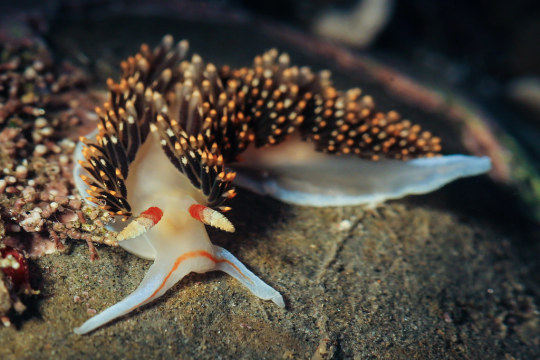
Phidiana hiltoni / Hilton's Aeolid. They are known for being quite aggressive, often biting and fighting other aeolids, which is so real of them. They always reminded me of lit matches
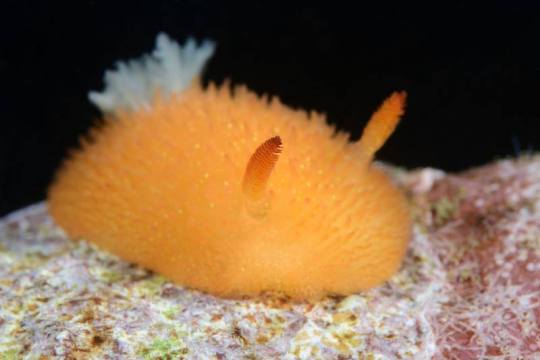
Acanthodoris lutea / orange-peel doris. Its bright aposamatic colouration is a warning to predators of its distasteful toxicity. They also notably smell of sandalwood! You don't understand. I NEED to hold one
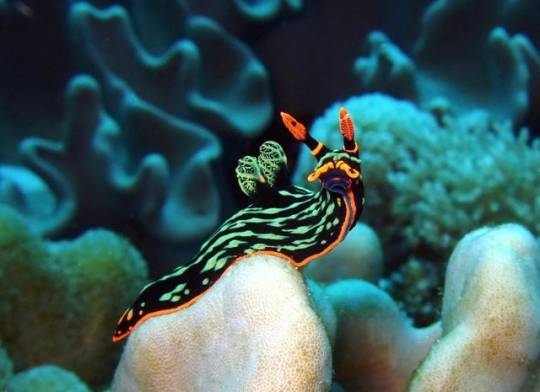
Nembrotha kubaryana / dusky nembrotha. They use the toxins in their prey ascidians to defend themselves against predators. The toxins are stored in their tissues then released in a slimy defensive mucus when alarmed. Nembrotha kubaryana are well-known for their neon appearance

Phyllodesmium poindimiei / Spun Of Light. It's primarily nocturnal and can cast its cerata for protection. Anyway, can we all agree that Spun Of Light is the most awesome name for a sea slug ever? I mean, look at it. That's a sea slug spun of light if I've ever seen one
Conclusion: sea slugs are the creatures ever
#god bless my soul at the gates if i messed up any details or images#sea slug#sea slugs#nudibranch#cyerce nigricans#glaucus atlanticus#blue glaucus#chromodoris lochi#dirona albolineata#hilton's aeolid#orange peel doris#nembrotha kubaryana#phyllodesmium poindimiei#marine biology#aquatic life#ocean#animals#ocean life#nature#leaf sheep#sea bunny
5K notes
·
View notes
Text
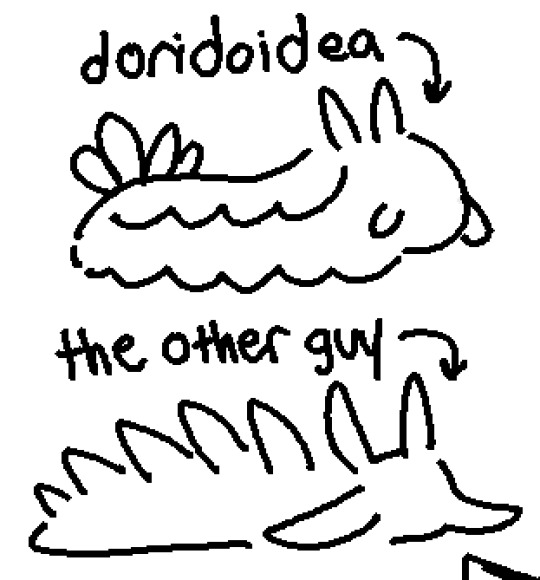
do not. get it twisted
#marine bio#small wooden animals#drew this for my bf to differentiate btwn the two kinds of nudibranchs#and i forgot the word for aeolid so its just the other guy for now#thought u may enjoy. good night
7 notes
·
View notes
Text
Nudibranches are nonbinary icons...love that
#nudibranches#aeolid#dorid#sea slugs#marine animals#learning more about these guys and they are hermaphrodites
5 notes
·
View notes
Text
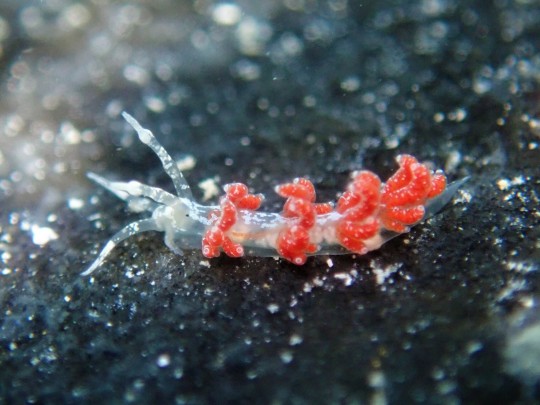
Favorinus auritulus is an aeolid nudibranch found in shallow waters off the coast of the eastern Atlantic, from Brazil to Florida. Interestingly, it was once found unusually north in Chesapeake Bay, though no further sightings have occurred. One common food source for this nudibranch is the eggs of other sea slugs!
Photo - Ben Eddy (b_eddy on iNaturalist)
229 notes
·
View notes
Text

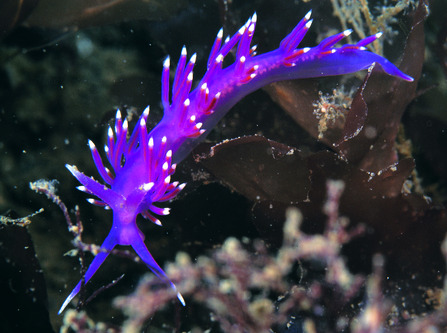
These violet sea slugs ─── the Edmundsella pedata; are a species of sea slug, in the family Flabellinidae. They're an aeolid nudibranch commonly referred to as the, "violet sea slugs"; despite the fact that there are sea slugs of other species which are in fact also violet. THIS sea slug appears to be one of the more notable violet slugs that often have a vibrant hue of violet.
This species has a distinctive pink-purple coloration over its entire body. In the Mediterranean it can grow to about 20 mm long, while specimens in the Atlantic Ocean may grow to 50 mm.
The cerata have white rings at the tip and occur in bunches which are joined together at their bases.
#sea slug#sea slugs#sea creatures#nudibranch#marine animals#fish#nudibranchs#marine life#sea animals#marine#marine biology#sea life#sea#ocean#aquatic life#aquatic#sea critters#nature#natural#outdoors#beautiful views#beautiful vibes#purple aesthetic#pink aesthetic
236 notes
·
View notes
Note
followed you because when you reblogged my bad communication post i loved your url !! do u have any nudibranch propaganda to share?
Hell yea i do!! This got a little long :)
These funky little dudes have the coolest morphology, something theyre well known for. They can be pretty tiny (0.4 cm) or surprisingly large (60 cm) and generally live in the tropics, though there are certainly a wide variety that live in cooler ocean water as well. Some of the more well known species are very eye catching, like the Jorunna Parva (Bunny slug) or Glaucus Atlanticus


Some of them look like funky leaves and some of them look like slugs we see on the surface too! (Did you know licking banana slugs that you find on land makes your tongue go numb? 10/10 not recommended but i was a dumb kid)
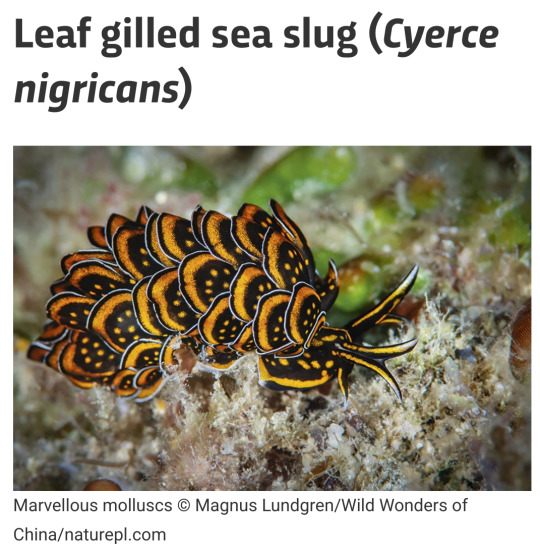
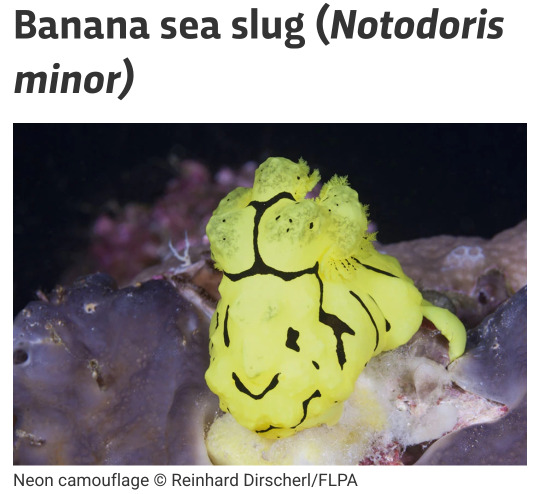
They also come in a goth or clown variant for those that are looking to fit a certain aesthetic :)

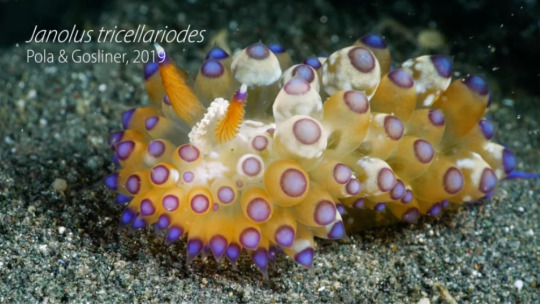
Theres two kinds of nudibranchs. Dorids, which breathe from a central plume of gills above their ass, and Aeolids, which breathe from a collection of spiky protrusions called cerata. There are a couple more distinguishing features relating to their digestive tracts and mantles (or lack thereof), but this is the easiest way to tell them apart in my opinion!


Theyre also carnivorous! These guys will eat a wide variety of stuff, including sponges, coral, barnacles, anemones, and even other nudibranchs and their eggs.
There are a couple species that have some pretty cool diets, like the Glaucus Atlantica, which preys on the portugese man of war and other siphonophores. It can eat the man of war whole if theyre small enough, but will also just eat the tentacles if theyre too big. Glaucus will then push the stinging nematocysts (the bits that hurt) from its insides to its outsides and use them as self defence!
There are also sea slugs, like the Costasiella Kuroshimae (technically not a nudibranch yada yada yada) that eat algae they then use to photosynthesize!
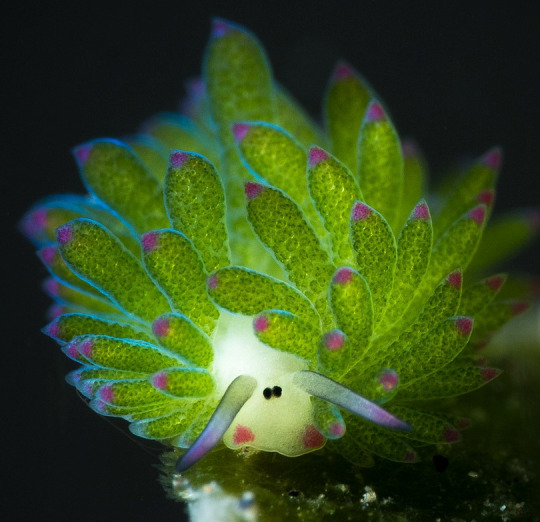
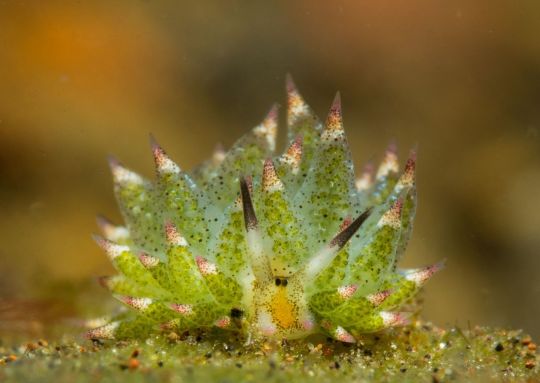
These funky little creatures are also hermaphroditic! Like a lot of animals, they use mating dances to attract a partner. Thats not whats cool about their reproduction though. When the time comes to lay their eggs, they do so in the coolest ribbon-like structures.
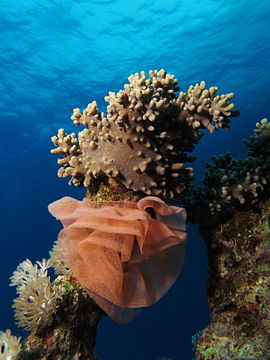
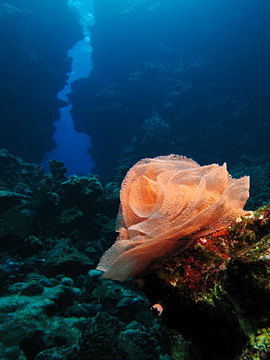
Mostly though, i just love how different all these little guys are. Personally, my fav nudi is from the ocean near where i live!

Anyways, that was rlly long. thanks if u ended up reading and defs look into these little weirdos on ur own!! (references? idk her :P but actually i dont remember where i learned most of this, though some supplemental info and pics w out credits from wikipedia!)
#syb rambles#nudibranch#sea slugs#marine biology#these r my specialest most favorite animals#also they cant see for shit#as someone who also sucks at seeing things#i love them so so so much#chatter
104 notes
·
View notes
Text
Happy Sea Slug Saturday!
Here's some sea slugs I've spotted over the years:


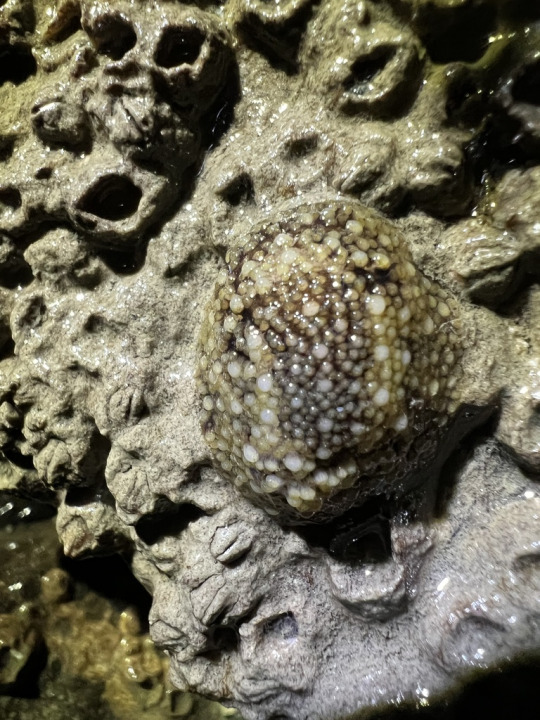


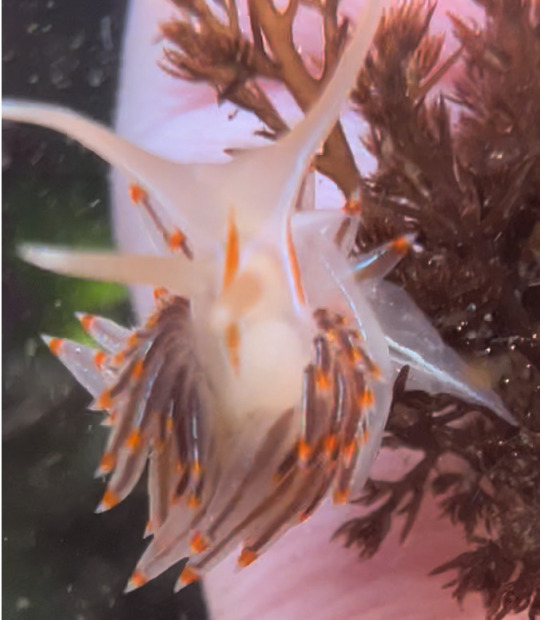







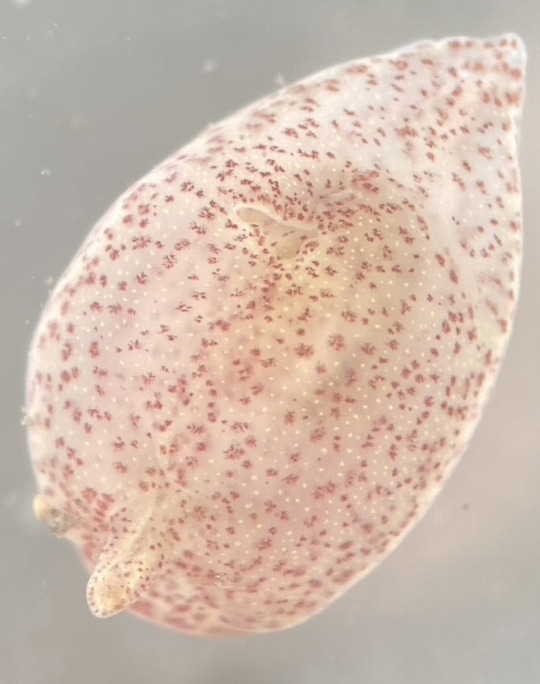
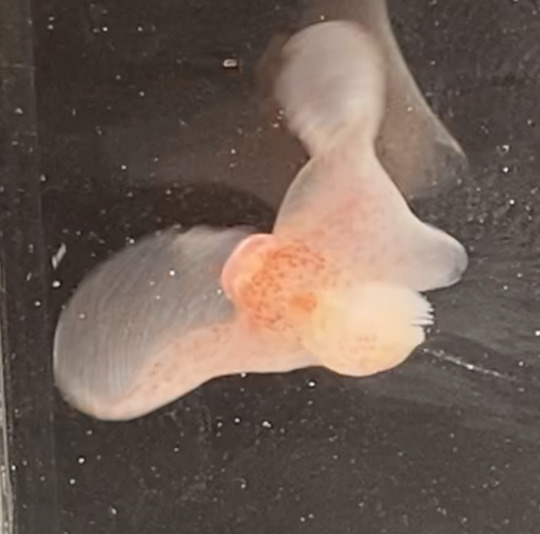
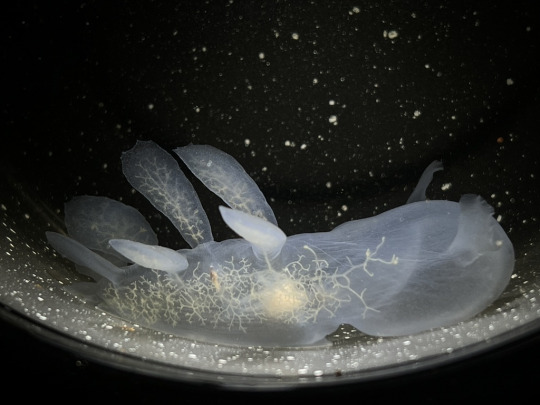


Melibe leonina The Lion’s Mane Nudibranch by JA Fields, Background credit to NASA, ESA and Allison Loll/Jeff Hester (Arizona State University). Acknowledgement: Davide De Martin (ESA/Hubble).
Tritonia sp.
Onchidoris bilamellata, the barnacle-eating sea slug
Dirona pellucida, golden dirona
Melibe leonina / hooded sea slug / lion's mane sea slug
Hermissenda crassicornis / horned nudibranch
Diaulula odonoghuei / leopard dorid
Triopha modesta / modest clown dorid
Aeloidia sp. / shaggy mouse nudibranch
Dendronotus rufus / red dendronotid
Rostanga pulchara / red sponge dorid
Antiopella fusca / white-and-orange-tipped Nudibranch
Coryphella trilineata / three lined aeolid
Gastropteron pacificum / bat wing sea slug
Gastropteron pacificum / bat wing sea slug
Melibe leonina, the hooded sea slug / lion's mane sea slug
Cliopsis krohnii / sea cherub
Clione sp. / sea angel
( #1,2, and 18 are available as borderless art prints directly from me in my shop or in other formats through INPRNT )
#sea slug saturday#sea slug#nudibranch#sea slugs#sea critters#sea angel#sea creatures#marine biology#marine life#salish sea#ocean#my marine life photos#gastropods#send nudibranchs
31 notes
·
View notes
Text
Nudibranch meet cute
More photos & info below:


The one with the dark, gold tipped protrusions on it's back (called cerrata) is Hilton's aeolid (Phidiana hiltoni), & the fluffy, cream colored one is a warty shag-rug nudibranch (Aeolidia loui). I don't know how aware they were of each other, but I was delighted that they bumped into each other & ran their oral tentacles over one another before going about their business. I was able to watch the Hilton's aeolid for a while, & it ended up briefly riding on a grainy hermit crab (Pagurus granosimanus), which then began pinching at it's cerrata before giving up on it.
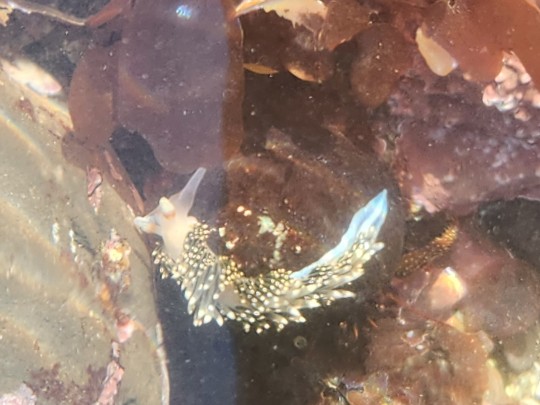

7 notes
·
View notes
Text

Moridilla brockii
#moridilla brockii#nudibranch#aeolid nudibranch#wikipedia#wikipedia pictures#nature#animals#ocean life#ocean critters#ocean creatures#ocean animals#sea life#sea animals#sea creatures#sea critters#marine critters#marine creatures#marine animals#marine life#marine aesthetic#marine biodiversity#marine biology#marine ecology#sea slug#sea slugs#snailblr#snailcore#oceancore#ocean aesthetic#gastropods
53 notes
·
View notes
Note
do you have a favorite sea slug? If so can we see them
HI !! i would love to share some of my favorite sea slugs with you :D
i'll start off with the Melibe genus because they have some really cool looking guys there.

Melibe colemani
probably my all time favorite sea slug. i like these guys because they look so unique !! it almost looks like a skeleton or a net. this image lets you see the transparent parts of the body easier, especially on that rhinophore (the antennae coming from the head on the right side of the image)

Green Melibe (Melibe viridis)
you miiight recognize this thing from that post about this thing tuesday. the way these guys eat is very similar to that of the Hooded Nudibranch, which is another slug from the Melibe genus. it is so so fascinating to me. they trap their prey inside their hood and then sweep it in from both sides to chow down.
i'm also a huge fan of sacoglossans, which are sea slugs that can photosynthesize using a process called kleptoplasty. i also think a lot of them are just really pretty lol. a very popular sacoglossan is the Leaf Sheep.

Little Leaf Sheep (Costasiella kuroshimae)
the Cyerce genus is another type of sacoglossan that has captured the attention of a lot of tumblr users, most notably Cyerce nigricans and Cyerce elegans.

Black-and-Gold Sapsucking Slug (Cyerce nigricans)

Elegant Sapsucking Slug (Cyerce elegans)
this post is already long enough, but i'll close this off by saying i also enjoy nudibranchs from the Proctonotoidea and Aeolid superfamilies :]
#thank you for asking !! <3#its always a lot of fun looking at these guys so thanks again for giving me an excuse LMAO#i'll have to make a post about some more obscure sacoglossans one day ...... bc i rlly do like them a lot#sea slugs#nudibranchs#sacoglossans#slug answers
4 notes
·
View notes
Photo
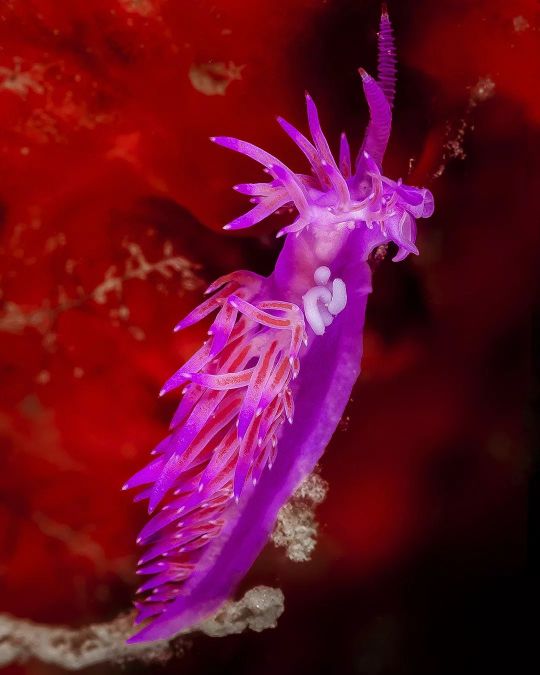
Flabellina affinis
75 notes
·
View notes
Note
alos i realized shellos was a sea slug today and thought of you
yeah YEAH!!!!! i like how both forms take common attributes of many nudibranches. such as the little “antenna” which is how they smell and sense things. this is seen on eastern shellos’s head. or the gills that usually is on their back end… which is seen on the head of a western shellos!!
the little wing like appendages on the eastern shellos are prob based off of blue angel (glaucus atlanticus). and the spikes on western shellos are based on aeolid nudibranches. which have those types of appendages on their backs like spines (theyre soft tho) theyre both known as cerata despite their different apperances!
but also. does this mean only western shellos have gills. and only eastern shellos have sensors
4 notes
·
View notes
Text


Cerata, singular ceras, are anatomical structures found externally in nudibranch sea slugs, especially in aeolid nudibranchs, marine opisthobranch gastropod mollusks in the clade Aeolidida. The word ceras comes from the Greek word "κέρας", meaning "horn", a reference to the shape of these structures.
Cerata are dorsal and lateral outgrowths on the upper surfaces of the body of these nudibranchs.
Cerata greatly extend the surface area of nudibranchs and aid in respiration, the process of gas exchange for metabolic use.[1]
Cerata are also used, in some cases, for attack and defense. In many aeolid nudibranchs, the digestive system extends into the cerata. These nudibranchs eat stinging celled animals (Cnidarians) such as anemones, hydroids and sea fans or Portuguese men o' war. The stinging cells or nematocysts are passed unharmed through the digestive system to cnidosacs at the tips of the cerata. Here the nematocysts mature and are then used by the nudibranch for its own defense.
those are his lungs...
4 notes
·
View notes